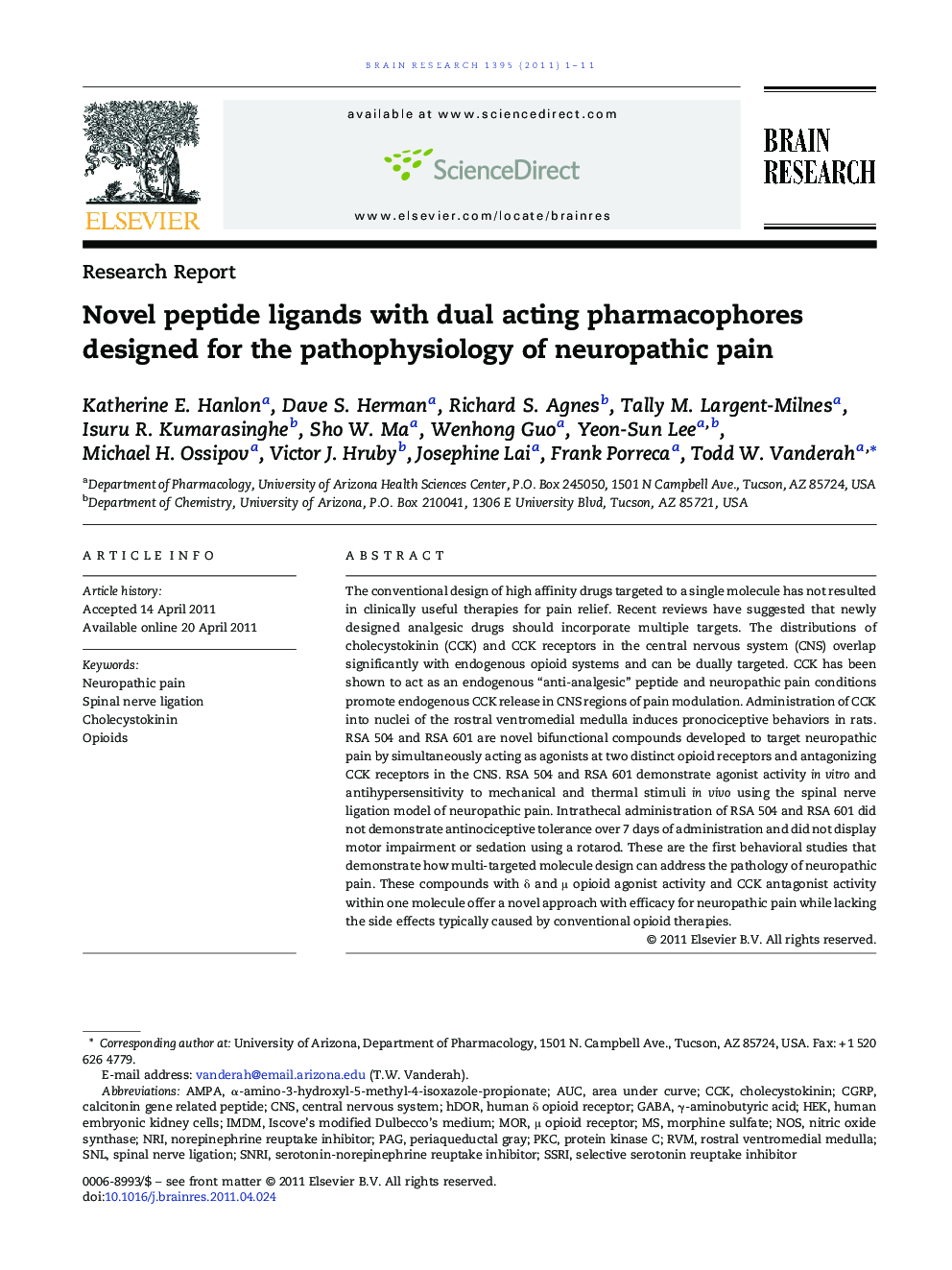| Article ID | Journal | Published Year | Pages | File Type |
|---|---|---|---|---|
| 4325905 | Brain Research | 2011 | 11 Pages |
The conventional design of high affinity drugs targeted to a single molecule has not resulted in clinically useful therapies for pain relief. Recent reviews have suggested that newly designed analgesic drugs should incorporate multiple targets. The distributions of cholecystokinin (CCK) and CCK receptors in the central nervous system (CNS) overlap significantly with endogenous opioid systems and can be dually targeted. CCK has been shown to act as an endogenous “anti-analgesic” peptide and neuropathic pain conditions promote endogenous CCK release in CNS regions of pain modulation. Administration of CCK into nuclei of the rostral ventromedial medulla induces pronociceptive behaviors in rats. RSA 504 and RSA 601 are novel bifunctional compounds developed to target neuropathic pain by simultaneously acting as agonists at two distinct opioid receptors and antagonizing CCK receptors in the CNS. RSA 504 and RSA 601 demonstrate agonist activity in vitro and antihypersensitivity to mechanical and thermal stimuli in vivo using the spinal nerve ligation model of neuropathic pain. Intrathecal administration of RSA 504 and RSA 601 did not demonstrate antinociceptive tolerance over 7 days of administration and did not display motor impairment or sedation using a rotarod. These are the first behavioral studies that demonstrate how multi-targeted molecule design can address the pathology of neuropathic pain. These compounds with δ and μ opioid agonist activity and CCK antagonist activity within one molecule offer a novel approach with efficacy for neuropathic pain while lacking the side effects typically caused by conventional opioid therapies.
Research highlights► Novel bifunctional cpd. agonizes μ/δ opioid receptors and antagonizes CCK receptors. ► Novel compound targets brainstem and do not induce opioid analgesic tolerance. ► Novel compound targets the pathological conditions of chronic pain. ► Drug design lessens drug–drug interactions and reduces opioid-induced side effects.
